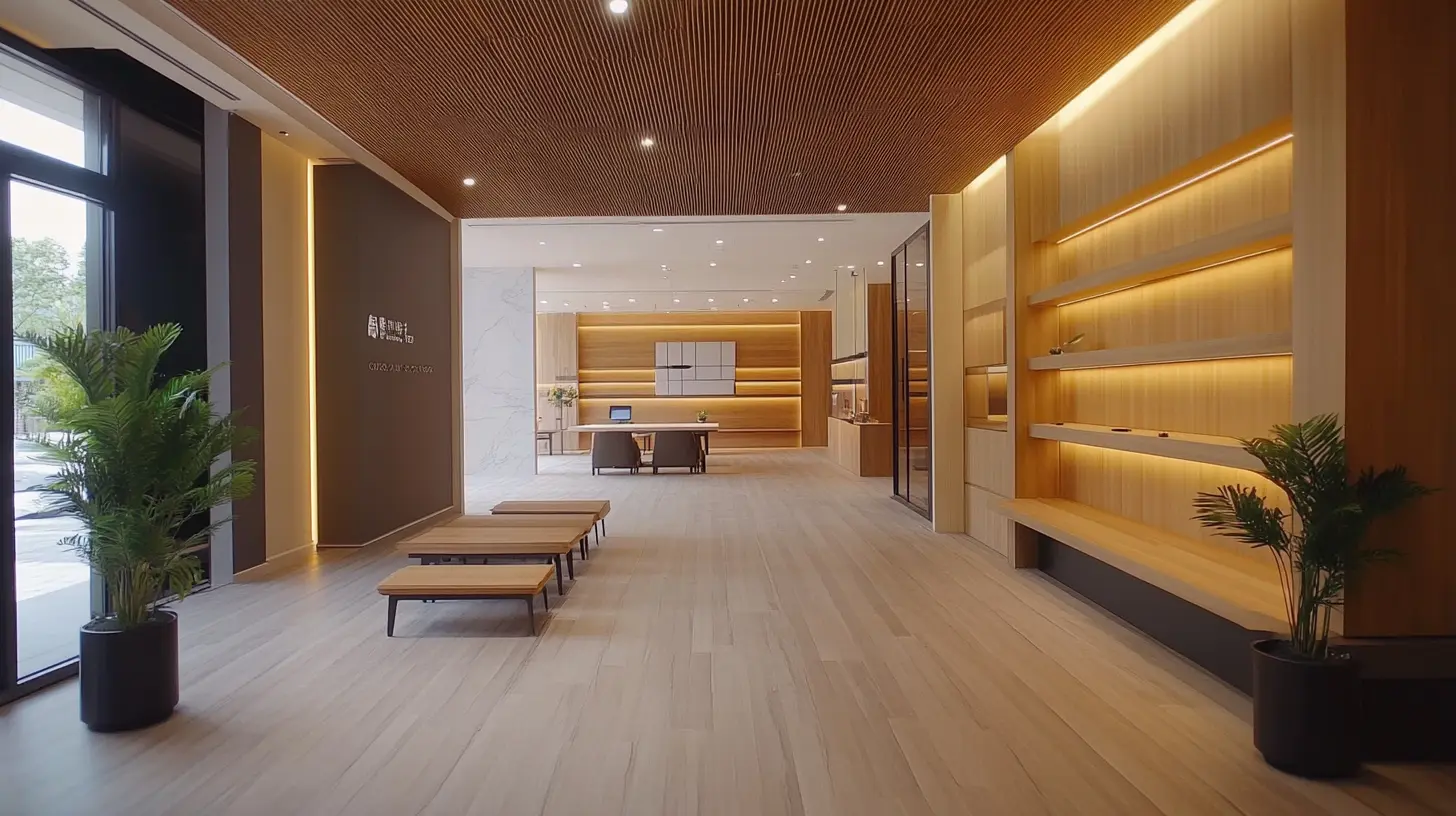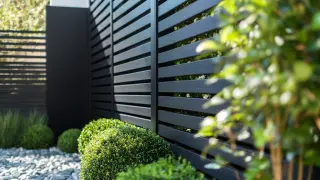Shandong Xiangying New Materials Technology Co., Ltd.
Shandong Xiangying New Materials Technology Co., Ltd.
While construction and design are evolving, the demand for new, innovative materials is still on the increase. By 2025, the market for WPC panels, or Wood Plastic Composite panels, is anticipated to develop significantly, driven by their greater durability and lower maintenance with an even greater supplementing value of environmental health benefits. According to a recent market research report, the global WPC market is expected to attain USD 10 billion by the year 2025, with over 11% CAGR growth rate. This vigorous demand creates an urgency for reliable suppliers who will provide high-quality WPC products to cater to various industry needs.
Shandong Xiangying New Material Technology Co. This is our purpose in this evolving landscape- to hold a development tenet of service and sincerity, ensuring mutual benefit and win-win cooperation with oour clients. Committed to providing the best products to our customers, we have mastered the art of manufacturing the best WPC panels for over 10 years. Now the future of WPC panels in 2025 would not be shaped entirely by our expertise or even the commitment we put in innovative global sourcing practices, but a lot would change in terms of how industries and the global market benefit from WPC panels.

One of the prominent trends in building and design today is Wood-Plastic Composite (WPC) panels, given their eco-friendly composition and versatility. With a shift to sustainability as a consumer concern, WPC panels are increasingly becoming popular due to their wood-like finish with much-improved durability. Further industry forecasts are portraying an exponential growth rate of the WPC market; therefore, stakeholders must now prepare strategies to adapt to emerging trends and demands. Market forecasts predict enormous growths in applications for WPC panel usage by 2025 not only in residential architecture but also in commercial settings. Developments in manufacturing processes have made these panels affordable and accessible for the mainstream market, edging out the conventional materials in competition. The introduction of smart technologies in the design of WPCs, further adding another layer of functionality, are highly appealing to a new breed of tech-savvy consumers looking for smart home and green solutions. Flexibility in global sourcing will cause manufacturers and suppliers to take advantage of strategic partnerships to ensure quality and availability of the WPC material. Thus, knowledge of marketplace dynamics on supply chain issues and technological advancements will lead to the successful navigation of this fast-growing sector. With huge promise for attractively positive environmental perspectives and economic potential, the future of WPC panels seems all set for 2025.

It is transforming quite remarkably: production, specifically of Wood Plastic Composites (WPC) panels, is influenced a lot by environmental issues to the industry. Innovations in the development of sustainable materials can put WPC panels at par with traditional wood but make it a greener solution in construction and design. Common eco-friendly practices adopted by manufacturers are the production of recycled plastics and sustainably harvested wood fibers to reduce waste and shrink carbon footprints during production stages.
Indeed, technologies are promising valuable improvements for making WPC panels more sustainable. One way is through the development of bio-based additives that will increase durability and performance while further reducing dependence on petroleum-based products. There are also new innovative recycling processes, which will enable waste materials generated by WPC production to be reclaimed and reused, thereby creating a circular economy within the industry.
Now with 2025 on the horizon, architects, builders, and consumers must embrace these ideals of sustainability. Knowing where all materials used are sourced from is not only good for the environment but also goes hand in hand with the rise of demand for such structures, globally, as green building solutions. The WPC panel industry is taking the green to meet the needs of both today's consumers and the earth.

As demand for sustainable building materials continues to be evident, Wood Plastic Composite (WPC) panels have become one of the choices of contractors and designers in many projects. In 2025, smart global sourcing strategies will be one of the means by which companies can navigate through the WPC supply chain to remain competitive. Thus, purchasing and materials supply dynamics will enhance efficiency in reducing costs along with better quality of production.
The above-mentioned WPC supply chain maintenance requires the development of a mutually beneficial business relationship with reputable suppliers who guarantee quality and timely deliveries. The process entails a worldwide search for suppliers, evaluating their sustainability practices, and the determination of their fit into the industry standards. Long-term partnerships would bring benefits to the businesses over and above favorable terms of contracts and collaboration towards innovation and responding to market needs.
Indeed, technology will be the backbone for smart sourcing strategies. Supply chain management software will provide insight into inventory levels, lead times, and market trends. It will enable companies to use data analytics to minimize risks associated with price volatility and supply disruptions, optimize their procurement processes, and make intelligent decisions concerning the sourcing of materials. Adoption of these technological interventions would ensure further agility and efficiency in sourcing, thus putting such businesses in good stead to gain from the increasing preference for WPC panels in the near future.

WPC panel scenarios are going to change so much with time, especially by 2025, as technological developments redefine manufacturing processes. To modernize and improve efficiency and quality of output, WPC panels are currently getting supplemented by the use of advanced technologies such as automation and improved material science. These developments become necessary given the increasing demands from almost all the applications-from internal wall covering to external cladding solutions. Manufactures are concentrating on developing solid and hollow panels with superior durability and aesthetic appeal: residential as well as commercial.
,sourcing strategies for high-quality wood fibers, plastics (PVC, polypropylene) globally have also become increasingly more sophisticated. Global sourcing plays a crucial role in assuring a steady supply of these important materials for WPC production. With advanced analytics and supply chain management technologies, companies can now optimize their procurement processes, reduce costs, and better manage product consistency. In addition, diversified geographical source location enables manufacturers to respond quickly to trends in the market. All these increases the industry's overall resilience.
WPC should look toward 2025 as the most important time in strengthening the market position of these panels through technology and supply chain optimization. A market for innovative products paves the path for innovation along with sustainability, quality, and efficiency - thus ushering the new era of WPC manufacturing suited to the environmentally conscious consumer. This will very much create value through dynamic and changing environments not only for manufacturers but also for end-users seeking durable and stylish environments for their spaces.
Looking forward to 2025, the Wood Plastic Composite (WPC) panels market is likely to grow significantly due to the rising demand for more sustainable and adaptable building products. As noted in a recent market analysis by Global Market Insights, the global market for WPC is expected to exceed $10 billion by 2025 and grow at a compound annual growth rate (CAGR) of over 15% from 2019. The increasing demand for eco-friendly products will further fuel growth rates of WPC panels in residential and commercial applications.
Regional developments show North America and Europe as the leading markets for WPC panels. In North America, especially the United States, the construction industry is increasingly becoming concerned with sustainable practices, reduction of carbon footprints, and use of renewable resources. According to the report by Mordor Intelligence, the U.S market is projected to grow at a rapidly accelerating rate with a predicted value of $4 billion by 2025. Europe, meanwhile, is also believed to be benefitting from strong regulations favoring eco-friendly materials, with the likes of Germany and the UK leading the way in adoption of WPC.
Asia-Pacific, which is led by China and India, also emerges as a potential ground for the WPC panels market. The region is expected to boost demand from rapid urbanization and consequent growth in the construction industry. According to Research and Markets, China is expected to show a CAGR of more than 18% during the forecast period due to investments in infrastructure and housing projects. Thus, all this emphasizes the necessity for stakeholders to indulge themselves in smart global sourcing strategies toward the fast-expanding market of WPC panels.
It's time to start evaluating contemporary customer preferences as they shape the design of the future Wood-Plastic Composite (WPC) panels. Its data reveals that with these trends comes a gradual but noticeable transition towards sustainability, with more customers choosing eco-friendly materials. Increasingly, WPC panels fabricated from recycled plastics, supplemented with sustainably harvested wood, are becoming popular among consumers. Consumers will, however, see their manufacturers coming with the sustainable practices that have been inducted into modern living, keeping beyond the green buyers.
Apart from aesthetics, features contribute significantly to consumer decisions. Consumers in modern times want featured versatile designs that can marry a wide variety of architectural types-from the modern minimalist style to rustic charm. Increasingly important features are customizable colors and textures, which enable consumers to show their individuality but enjoy durability and lower maintenance associated with WPC panels. Data indicates that brands developing aesthetic appeal and customized options are attaining higher engagement and conversion rates.
Design trends also owe their change to advancements in technology. With the innovation of smart technologies into the features of WPC panels such as moisture detection systems and UV-resistant coatings, WPC panels now suit the demands of consumers for highly innovative products to better functionality and longevity of the items. As we are looking at the year 2025, realizing these expectations is what majorly drives the manufacturers who have to make products for well-informed and rather picky markets. This kind of data analysis opens up a pathway for successful innovations while attaching consumer values to global sourcing strategies enhancement.
With 2025 just around the corner, the WPC (Wood Plastic Composite) panels have moved into an increasingly convoluted scenario mainly due to difficulties in the global supply chain. The newer disclosures caused by several natural disasters, political upheavals, and economic fluctuations have forced companies into reconsidering their sourcing strategies. The recent pandemic clearly showed how weak the supply chain was with delays increasing costs, adding to the other costs of production and profitability.
To address the aforementioned issues, a more proactive approach to global sourcing must be adopted by firms. Such proactive sourcing involves diversifying suppliers across various geographical locations in order to reduce risks stemming from over-dependence on a single-sourcing region. Extending supplier engagement should also help companies in ensuring continuous availability through competitive pricing. In addition, investments into technologies that allow greater transparency across the supply chain would facilitate better forecasting and inventory management.
Importantly, sustainability remains one of the most significant aspects of WPC sourcing. Growing consumer awareness regarding eco-friendly products creates a need for materials sourced sustainably. Accordingly, any company pursuing sustainable practices strategies will have better efforts in marketing its product to a rather eco-conscious consuming base. Solving the problems concerning the supply chain disruption and sustainable sourcing will be the mainstay of future growth for WPC panels, considering this transforming market.
Wood-Plastic Composite (WPC) panels are set to redefine applications beyond the usual uses in the future by expanding into new segments across markets. The increased demand for the natural products as green materials has resulted in rapid growth on possible applications in the worldwide WPC market, going to a projected USD 10 billion by 2025. This new product, already celebrated for its toughness and resistance to weather conditions, is quickly capturing attention in sectors such as construction, automotive, and furniture design.
Apart from decking, WPC panels are being used extensively in cladding, fencing, and interior walls in construction. A recent one from Research and Markets predicts that the market for construction will account for nearly 60% of the share of the WPC market in 2025. This indicates a growing awareness of WPC's merits as a sustainable option, reducing dependency on timber, thereby taking some of the pressure off the environment.
The automobile sector is fast adopting interior applications of WPC materials because these materials beautify the interior and also reduce weight without strength compromise. The report of MarketsandMarkets suggests that from 2020 to 2025, the automotive WPC market will grow with a CAGR of 12%. All of these changes show a very strong transition towards sustainable manufacturing practices and give testimony to the industry's commitment to reducing carbon footprints.
Growing Opportunities in WPC become more worthwhile as a global sourcing strategy. Through smart sources, companies should think of innovative sources to maintain compliance with international standards and maximize cost efficiency. From there, these good sourcing practices enable the accessing of quality material inputs that will lead to greener futures on various applications of WPC panels.
WPC panels are eco-friendly building materials made from a blend of wood fibers and plastic, known for their durability, versatility, and ability to mimic traditional wood aesthetics.
WPC panels are becoming popular due to their sustainability, durability, and versatility, which align with the increasing consumer demand for eco-friendly building materials.
The global WPC market is projected to exceed $10 billion by 2025, with a compound annual growth rate (CAGR) of over 15% from 2019.
North America and Europe are anticipated to be the leading markets, with North America, particularly the U.S., forecasted to reach a market value of $4 billion.
In addition to construction, WPC panels are being increasingly used in the automotive sector for interior applications and in furniture design due to their aesthetic appeal and weight reduction properties.
Smart technologies integrated into WPC designs enhance functionality, appealing to a tech-savvy consumer base interested in smart homes and sustainable living solutions.
Manufacturers must navigate supply chain challenges and leverage strategic partnerships to ensure the quality and availability of WPC materials in an evolving market.
The construction segment is anticipated to account for nearly 60% of the WPC market share by 2025.
The automotive sector is adopting WPC materials to reduce carbon footprints and enhance sustainable manufacturing practices, reflecting a commitment to eco-friendly solutions.
Companies need to engage in smart global sourcing strategies to access high-quality materials, ensure compliance with international standards, and optimize cost-efficiency as they capitalize on the growing WPC market.





